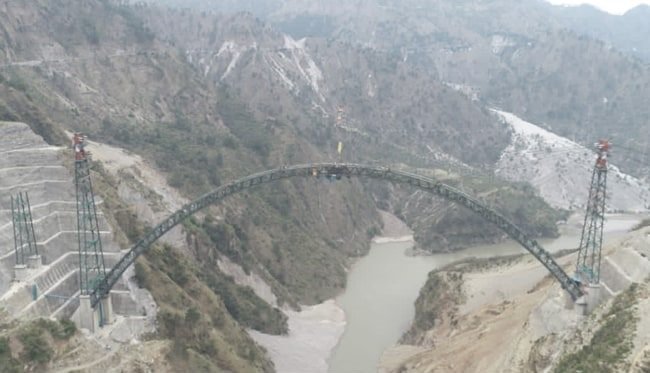Chenab Rail Bridge will be the world’s highest railway bridge afterits completion by the end of this year
- The Arch closure was one of the most difficult parts of the bridge over Chenab
- The project is expected to be finished by December 2021 and will have a lifespan of 120 years
- The Chenab Bridge is part of India’s Udhampur-Srinagar-Baramulla rail link project
India’s Ministry of Railways issued a statement announcing that Indian Railways has completed construction of the steel arch of the Chenab Rail Bridge, which will be the world’s highest railway bridge after its completion by the end of this year.
According to a statement, “The Arch closure was one of the most difficult parts of the bridge over Chenab and its completion is a major leap towards the completion of the 111 km-long winding stretch from Katra to Banihal.”
“At present, it takes 12 hours via road (Katra-Banihal), but after completion of the bridge, distance via train would be halved,” Northern Railway general manager Ashutosh Gangal said.
The last, 5.6-meter piece of metal was fitted at the highest point and joined the two arms of the arch that currently stretch towards each other from both the banks of the Chenab River.
The Chenab Bridge is part of India’s Udhampur-Srinagar-Baramulla rail link project (USBRL). The 1,315-meter-long bridge is being built at a height of 359 meters. Once completed, it will be the highest rail bridge in the world, and 35 meters higher than the Eiffel Tower.
The ministry also said that the bridge will be able to resist winds of up to 266kph, as well as earthquakes with a magnitude of up to eight, and high-intensity blasts.
Work on the project, which includes construction of several bridges and tunnels along the route, started in the early 2000s, but was suspended due to construction challenges. The coronavirus pandemic also added to the delay. The project is now expected to be finished by December 2021 and will have a lifespan of 120 years.




